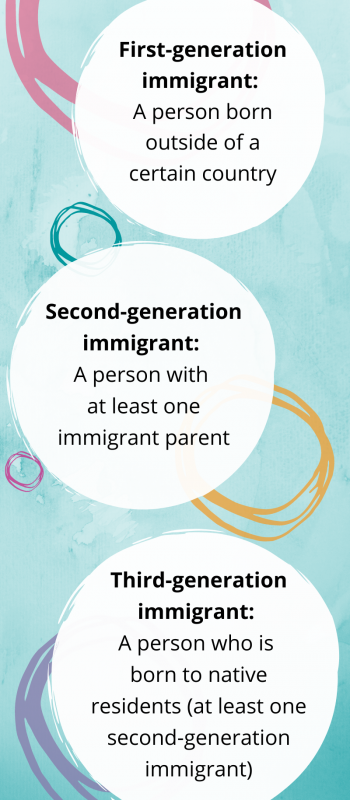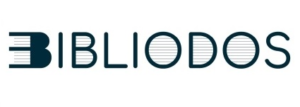„I am a foreigner in my parents’ motherland and I am a foreigner in the country
to which they came almost thirty years ago.“ (Ratcheva, 2016)
Since 1990 the number of immigrants in Europe increased from 49,6 million to 82 million (UN DESA, 2019). Today in 2020, after centuries of experience, countries in the European Union still struggle in finding one effective strategy to manage the influx of millions of immigrants. The Creative Europe programme set its goal high – to ensure the social, cultural, political and economic integration of the new arrivals (European Commission, n.d.).
Scientists say it makes a difference if migrants are either forced into moving to a different country or if they choose to do so. Motivation has a great impact on their adaptation and identification (Boğaç 2009). People who are highly attached to their motherland but forced into migration are usually more affected by disrupted self-identity. On the other hand, people who freely chose to migrate are more likely to identify with their destination country. (Tartakovsky, 2013; Erikson, 2006; Relph, 1976; Wright and Rossi, 1981).
Cultural identity is a sense of belonging somewhere. The sense of belonging is a fundamental human desire. If it is desaturated, it puts stress on every individual (Maslow, 1970). Each group of people works thanks to certain rules. Following those rules is the first step to become part of that group (Alba, 2005). But with which group should a person identify themself the most – their family, friends, classmates, colleagues, local group of people, migrant group of people? Identity stands on both individual feelings of belonging and attachment but also an external perception of identity by others (Simon, 2012). Second-generation immigrants are often torn between the culture of their parents and the culture of the country they live in. Boundaries defining their group are blurred. They are developing their own cultural identity in between two cultures.
Having shared values, morals, principals or way of life, helps to create a relationship between people. Language serves as a transmitting tool and verbal expression of these beliefs. Speaking a language of the country people migrate to immediately increases the opportunies to connect with its residents as well as getting a better paid job rather than if people do not speak the official language. Puloka (2012) states that without effective communication it is impossible for people to posses a strong personal identitity, perform socially sanctioned behavior or maintain active social relations within the cultural group, etc. Sapir-Whorf´s hypothesis states that a person is limited by the Extent of the knowledge of their language and and consequently speaks and behaves differently due to the limitations of their language (Lucy, J., 1997). Bilbatua and Ellis (2011) share the experience of a first generation immigrant about her social adaptation. She dealt with prejudice coming from residents who thought that inability to learn the official language correlates to low inteligence or immigrant status. As she was learning the language, she noticed that her personality changed depending on if she spoke the official language or her native language. Lack of language was a significant obstacle to bonding with the resindents´ group. Expressing humour as a characteristic attribute of personality was especially challenging in the other language for a long time.
Despite some natives´ negative attitude believing immigration poses a threat to their national identity and way of life, the EU migration crisis starting in 2015 has proven that, due to the nature of the European Union, the nations will not be able to ignore the problem anymore (Council of the EU, 2016).

Table: https://www.pewsocialtrends.org/2013/02/07/second-generation-americans/
Erasmus+ project Bibliodos meets not only migrants´ needs of learning the language of their host country but also promotes European heritage and literature. A person will be able to deepen their knowledge and understanding of European culture and enhance their language skills through an extensive digital library containing many fundamental pieces of literature. Every book will be animated and illustrated, adapted to language A1+ level, adjusted to the needs of participants with disabilities or learning disorders, adapted in sign language or made as audiobooks for visually impaired people. All the materials will be accessible for anybody on the project´s website. Project´s outputs encourage development of effective language skills and understanding between European and other cultures more so promote inclusion of users with disabilities or learning disorders. Be sure not to miss the first adapted novel by french author Guy de Maupassant Bel Ami which is available on projects website.

Visit the project website : bibliodos.eu/![]() Follow the project on Facebook: @Logopsycom
Follow the project on Facebook: @Logopsycom
#Bibliodos #accessibilité #littérature #erasmusplusproject #educationforall #readanytimeanywhere
In collaboration with : Citizens In Power / Πολίτες Σε Ισχύ, MYARTIST, Langues Plurielles, Les Apprimeurs, Istituto dei Sordi di Torino
References:
- Alba, R. (2005) Bright vs. blurred boundaries: Second-generation assimilation and exclusion in France, Germany, and the United States, Ethnic and Racial Studies, 28:1, 20-49, DOI: 10.1080/0141987042000280003
- Bilbatua, L. & Ellis, E. M. 2011, ‘Bilingual identity: language and cultural shift in the experience of a Basque-Spanish immigrant to Australia’, Voces Hispanas, vol. 8, pp. 10-15.
- Boğaç, C., 2009. Place attachment in a foreign settlement. Journal of Environmental Psychology, 29(2), pp.267-278.
- Council of the EU, 2016. 4. 19. EU migration crisis: the inside story – documentary in English. [Video]. YouTube. Retrieved August 26, 2020, from https://www.youtube.com/watch?v=YnYzcl4QRgY
- Erikson, K. (2006). Everything in its path. New York: Simon and Schuster.
- European Commission. n.d. Refugees, Migration And Intercultural Dialogue – Creative Europe – European Commission. [online] Available at: <https://ec.europa.eu/programmes/creative-europe/cross-sector/refugees-migration-intercultural-dialogue_en> [Accessed 26 August 2020].
- Lucy, J., 1997. Linguistic Relativity. Annual Review of Anthropology, 26(1), pp.291-312.
- Maslow, A., 1992. Motivation And Personality. New York: Harper Collins.
- Puloka, D., 2012. Cultural Identity And Heritage Languages. [online] Mckendree.edu. Available at: <https://www.mckendree.edu/academics/scholars/issue15/puloka.htm> [Accessed 26 August 2020].
- Ratcheva, T., 2016. How Can We Find A New Way To See Ourselves? — Identity Crisis Of Second-Generation Immigrants. [online] Medium. Available at: <https://medium.com/diaspora-identity/how-can-we-find-a-new-way-to-see-ourselves-identity-crisis-of-second-generation-immigrants-f4d76cfb4d8b> [Accessed 26 August 2020].
- Relph, E., 1976. Place And Placelessness. London: Pion.
- Simon, Patrick. 2012. French National Identity and Integration: Who Belongs to the National Community? Washington, DC: Migration Policy Institute.
- Tartakovsky, E., 2013. Immigration. New York: Nova pub.
- United Nations, Department of Economics and Social Affairs, Population Division. International Migrant Stock, 2019. United NAtions databate, POP/DB/MIG/Stock/rev.2019 [online] Available at: <https://www.un.org/en/development/desa/population/migration/data/estimates2/estimates19.asp> [Accessed 26 August 2020].
- Wright, J. and Rossi, P., 1981. Social Science And Natural Hazards. Cambridge (Mass.): Abt Books.
Table:
Pew Research Center’s Social & Demographic Trends Project. 2013. Second-Generation Americans. [online] Available at: <https://www.pewsocialtrends.org/2013/02/07/second-generation-americans/> [Accessed 28 August 2020].

